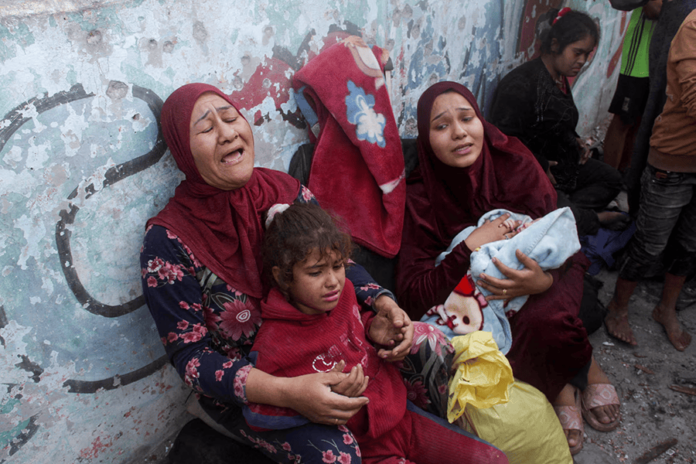On Friday, the U.N. Human Rights Office reported that nearly 70 of the casualties it has confirmed in the ongoing Gaza conflict were women and children. They criticized what they described as a systematic breach of key international humanitarian laws.
Since the war began, which sees Israel’s military clashing with Hamas militants, the U.N. has only counted deaths that it could verify through three independent sources, and that count is still ongoing. Currently, they’ve confirmed 8,119 fatalities—significantly lower than the over 43,000 reported by Palestinian health officials during this year-long conflict. However, their analysis supports Palestinian claims that a substantial number of those killed are indeed women and children.
The U.N. emphasized that this situation reflects a systematic violation of fundamental principles of international humanitarian law, particularly regarding distinction and proportionality in warfare. Volker Turk, the United Nations High Commissioner for Human Rights, stressed the importance of holding accountable those responsible for serious breaches of international law through fair and unbiased judicial processes while ensuring all relevant evidence is preserved.
In response to this report, Israel’s diplomatic mission to the U.N. in Geneva firmly rejected these findings, arguing that it misrepresents reality on the ground and overlooks Hamas’s role in intentionally causing civilian casualties in Gaza.
They contend that Hamas hides among civilians and uses them as human shields—placing responsibility for these deaths on them. Israel claims there’s roughly one civilian death for every fighter killed—a ratio they attribute to Hamas’s tactics.
Hamas has denied these allegations about using civilians or civilian infrastructure like hospitals as shields during combat. The Israeli military initiated its offensive following an attack on October 7th by Hamas fighters that resulted in around 1,200 Israeli deaths and over 250 hostages taken.
They assert they are making significant efforts to protect civilians during their operations and have established thorough procedures to comply with armed conflict laws—ensuring commanders have access to all pertinent information before carrying out attacks while carefully assessing potential civilian harm beforehand.
Youngest Victim Aged One Day
Ajith Sunghay, who leads the U.N. Human Rights Office for the occupied Palestinian Territory, spoke to reporters during a briefing in Geneva.
He explained that the fatalities mentioned in their report were confirmed by various sources, including neighbors, family members, local NGOs, hospital records, and U.N. personnel on-site.
The numbers are significantly higher than what we’ve seen in previous years, so we need some time to verify everything, he noted. He also mentioned that he expected the final count from the U.N. to be close to what the Palestinians have reported.
According to the report, the youngest confirmed victim was just a day old, while the oldest was a 97-year-old woman. In total, 44 of those killed were aged 18 or younger; notably, children between 5 and 9 made up the largest age group affected by these fatalities.
This pattern aligns with the demographics of the area and suggests a troubling lack of measures taken to protect civilians.
The findings revealed that in 88 instances, five or more individuals lost their lives in a single attack—this indicates that the Israeli military employed weapons capable of causing widespread damage.
The report also mentioned that some deaths might have resulted from stray projectiles fired by Palestinian armed groups.

